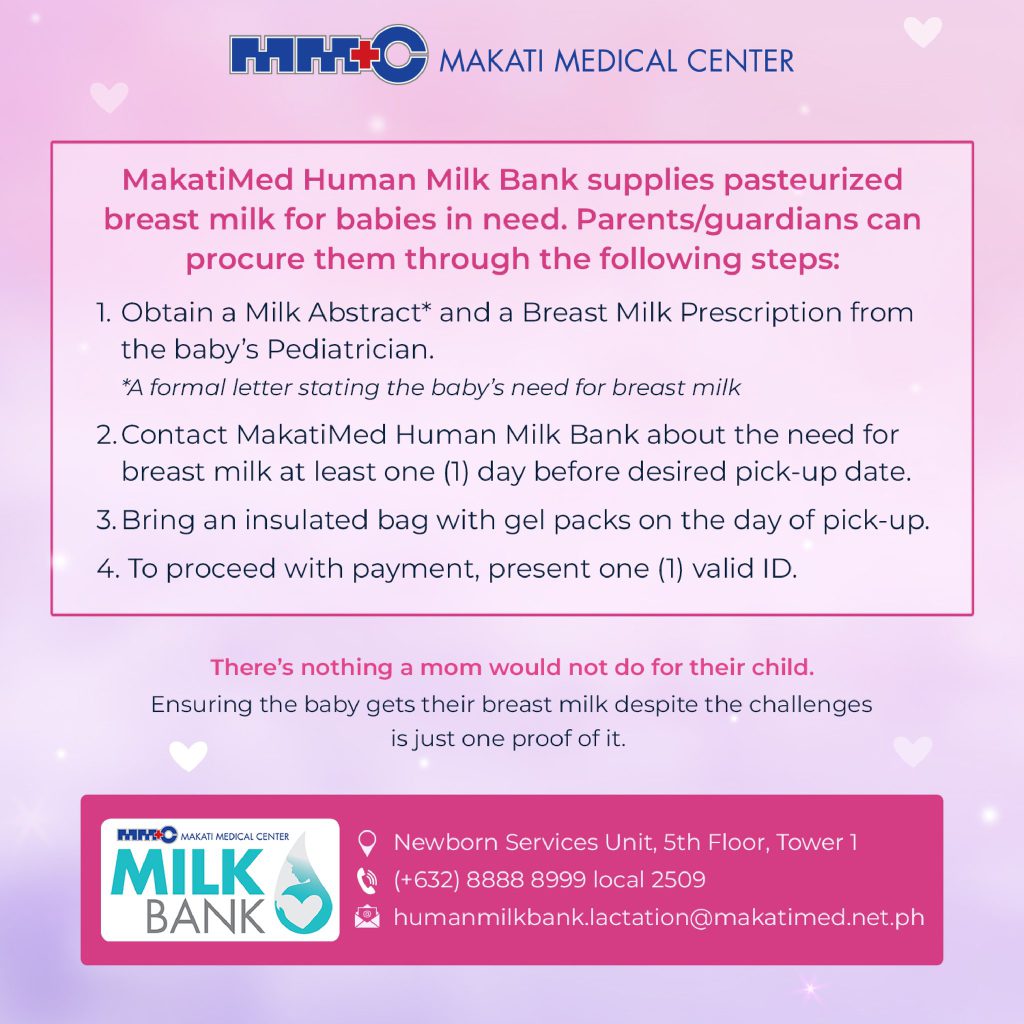In a recommendation by the World Health Organization (WHO), ideally, mothers should breastfeed their baby exclusively for the first six (6) months of life, then complement breast milk with safe and adequate solids until the age of two (2). Unfortunately, based on a 2023 report by the Department of Science and Technology (DOST), breastfeeding among Filipino mothers is a declining practice in the months following a baby’s birth.
- 61.2% of infants receive breast milk exclusively within the first hour after birth
- 50.4% of infants aged zero (0) to (six) 6 months receive breast milk exclusively
- 47.2% of infants aged zero (0) to three (3) months receive breast milk exclusively
- 14.3% of infants aged four (4) to six (6) months receive breast milk exclusively
- 34.5% of infants aged 0 to three (3) months drink water and other liquids apart from breast milk
“Breast milk remains to be the best source of nutrition for babies due to its many benefits,” says Catherine Onghanseng, MD, Pediatrician and Lactation Consultant at Makati Medical Center (MakatiMed).
Think “ABCD” to remember breast milk and breastfeeding’s benefits:
A: Antibodies
“Antibodies are protective proteins produced by the immune system in response to the presence of a foreign substance such as infections. When either the mother or her baby is sick, the mother’s body produces antibodies that she can transfer to her baby through her breast milk to protect baby from illnesses,” explains Dr. Onghanseng.
B: Bonding
According to the MakatiMed doctor, breastfeeding helps create intimacy and bonding between Mom and baby. “This connection can provide positive psychological effects. It can lower stress and increase feelings of calm for both the mother and baby,” adds Dr. Onghanseng
C: Complete nutrition
The doctor points out that breast milk contains 90% water and 10% nutrients in the right amount necessary for an infant to grow healthy during the first six (6) months of life.
D: Development
“Many studies have shown that breastfeeding has been associated with improved IQ and EQ scores,” reveals Dr. Onghanseng. “These are due to the fatty acids contained in breast milk essential for brain development during infancy, and higher oxytocin that reduces stress.”
“D” can also stand for dynamic, which describes how breast milk naturally changes to meet a baby’s nutritional needs.
It starts as colostrum, a thick and yellow concentrated liquid rich in antibodies that protect a newborn’s immune system. The volume of breast milk increases after a week, as does its fat and lactose content, giving it a creamy consistency. More nutrients and antibodies are found in breast milk four weeks later, and even up to the toddler years.
“This emphasizes the importance of breastfeeding your child for as long as possible,” says Dr. Onghanseng
Supply and demand
How much breast milk does a mother produce? And why do some mothers produce more than others? According to the doctor, breast milk is all about supply and demand: The more you breastfeed (and drain your breast after each feeding), the more milk is produced. Pumping after breastfeeding also stimulates the body to produce more milk.
Dr. Onghanseng recommends breastfeeding your baby every two (2) hours during the day, and three (3) to four (4) hours at night, or “at least eight (8) to 16 times a day,” especially during the newborn stage.
Nurse a baby for 15 minutes per breast, and if your little one falls asleep after one breast, gently wake him or her up and offer the other breast. Make sure the baby is positioned and latched well so he or she is able to get all of Mom’s milk.
Breastfeeding challenges
As beneficial as breast milk can be, some mothers still cannot be convinced to nurse long-term—especially when they develop sore and cracked nipples or breast tenderness from nursing.
Stress, lack of sleep, dehydration, the need to return to work, certain medications, flat or inverted nipples, and hormonal changes not only affect breast milk production; they make breastfeeding a chore.
“Sometimes breastfeeding does not go as expected,” concedes Dr. Onghanseng. “In fact, UNICEF has reported that eight (8) out of 10 moms stop breastfeeding before they want to due to challenges that they have encountered.”
To increase milk production, load up on natural milk-boosting foods like whole grains, dark leafy greens like spinach and broccoli, garlic, chickpeas, almonds, ginger, and spices like anise and turmeric. Steer clear of sage, parsley, and peppermint, and definitely do not smoke or drink.
“A Pediatrician or Lactation Consultant can help determine the possible reasons why a mother’s milk supply is low as well as how to improve it,” she says. “They can also prescribe medications to help boost milk supply.” A doctor can likewise offer alternatives to breast milk (like giving breast milk using a bottle or shifting to infant formula) for babies who cannot draw milk from a breast due to cleft lip or tongue-tie or gain adequate weight from their mother’s milk.
“If a mommy or a family is thinking about supplementing with infant formula, it is very important to first talk to their Pediatrician about how to protect and boost their milk supply, and what and how to safely give infant formula to their baby,” says Dr. Onghanseng. “It remains a family decision.”
How long one should nurse a child is also a family decision. Dr. Onghanseng knows of a mother who continues to breastfeed her 9-year-old child!
“After two (2) years old, breastfeeding’s function is more of an emotional bonding experience,” she says. “As a Lactation Consultant, I would tell you to keep at it as long as possible—and as long as it is okay with Mommy, baby, and the entire family.”

Article based on Media Channel Asia’s “Breastfeeding Tips from a Lactation Consultant” episode with Catherine Onghanseng, MD last August 18, 2023.
For the complete list of Makati Medical Center’s Pediatricians, click here. You may also reach us via MakatiMed On-Call at (+632) 8888 8999 or at [email protected].
Follow our social media pages for more health-related content and for the latest updates: https://www.makatimed.net.ph/social-media-pages/











